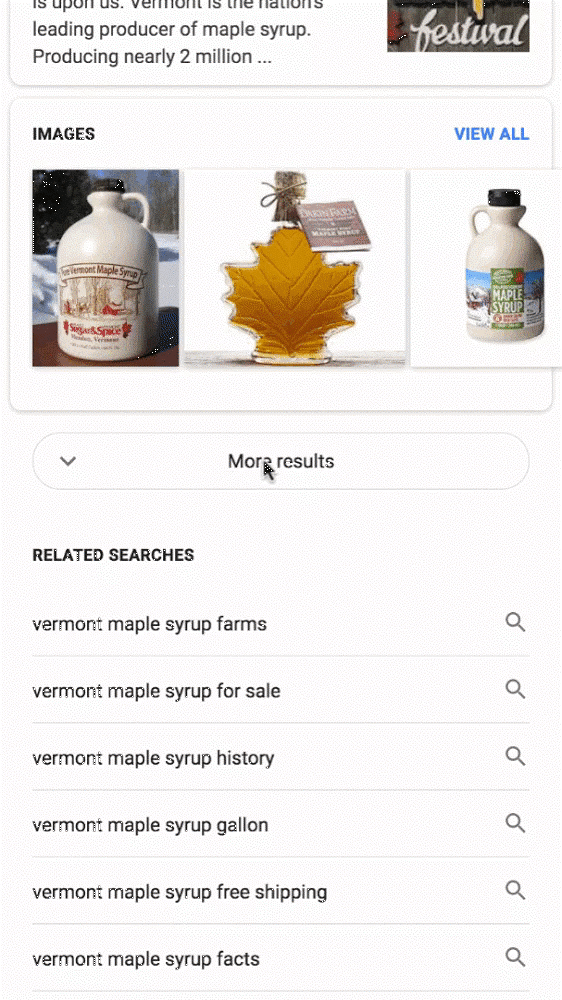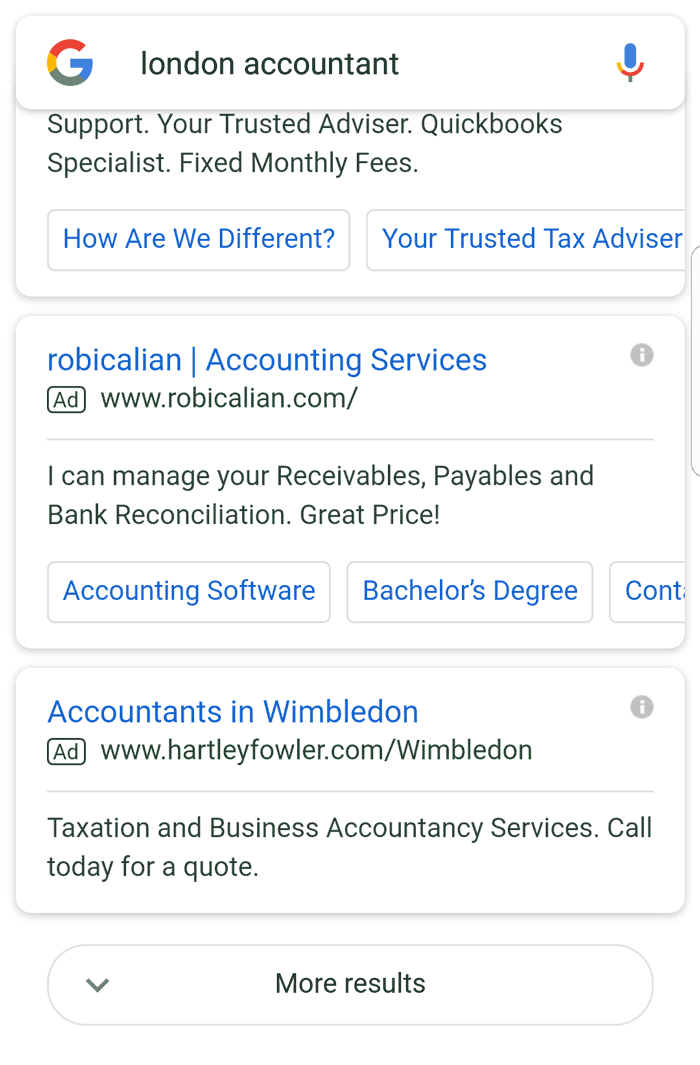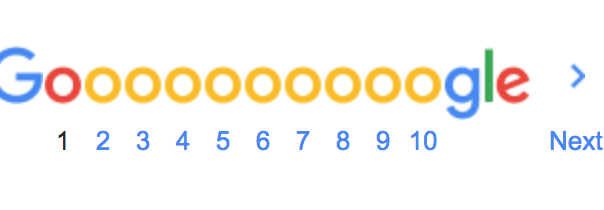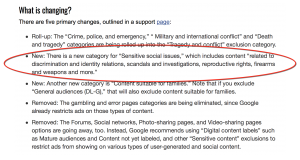— May 8, 2018

As you may have noticed over the past few weeks, Google has been testing a ‘More results’ button for mobile searches – and it was officially rolled out on April 12. Google announced the roll out on its @searchliason Twitter account with a brief description of what’s changing.
The marketing community is already asking what a single page of mobile search results means for SEO, but this change is also going to impact PPC ads on mobile too. In this article, we’re going to discuss what the impact on mobile ads will be and what you need to keep an eye out for over the coming months.
Google rolls out ‘More results’ button
The ‘More results’ button is now fully rolled out for everyone using the Google app on iOS and Android, plus major browsers, except for Chrome on iOS which is due to get support for this feature soon.
Instead of the ‘next’ button we’re used to seeing at the bottom of mobile search pages, which allowed users to navigate to the next page of results, you’ll now see a ‘More results’ button that creates a single page mobile SERP.
So you won’t be seeing this anymore:

This is what you’re looking at now:

Source: SEOroundtable
Now, for searches that show ads at the top and bottom of the page, a ‘more’ button will be displayed like this:

When users click ‘More results’, the next page of results loads directly below which raises a few questions about how Google plans to show ads in the new format.
What does this mean for advertising on Google?
Google’s ‘More results’ button changes the mobile search experience for users and this is going to impact the way they interact with ads as they scroll through results. We’ll have to wait until more data is available on how this impacts paid and organic mobile search but there are a few things to keep in mind during these first few months.
This is only going to affect mobile
The first thing to keep in mind with Google’s ‘More results’ button is it only applies to mobile searches. For desktop searches, users are going to keep seeing the trusty old Goooooooooogle navigation at the bottom of each page.

Unless Google rolls this out across desktop search at some point in the future, you’ll need to consider the possibility this skews performance results for campaigns running across mobile and desktop. In all likelihood, this won’t be a major issue – at least no more than the other differences between mobile and desktop search – but it’s something to be aware of, particularly if it turns out the ‘More results’ button significantly impacts ad performance on mobile.
Keep a close eye on your mobile-only campaigns to gauge what impact this is having and then factor this in for your campaigns running across all devices.
A single-page mobile SERPs
While switching from ‘Next’ to a ‘More results’ button doesn’t seem like a major change for users, it completely removes the notion of pages for mobile SERPs. Instead, users are scrolling down a single page of results that progressively loads at their control. The psychology of results on page two being less valuable than those on page one disappears and users find themselves scrolling through larger blocks of ads, which could have an impact on the following:
- Impressions: If users are more likely to click ‘More results’ than ‘Next’, ads that previously displayed at the top of page two could see a boost in impressions.
- Click-through rates: The more ads users scroll through the more likely they are to click one, but the more ads you’ll be competing with.
- Ad positions: If ‘More results’ means more ads, the performance of different ad positions could shift.
The most interesting scenario to look at is search results with ads showing at either side of the ‘More results’ button. By essentially removing the top of every results page beyond page one, Google has to rethink the way it shows ads on mobile.
No more top packs after page one
While Google was testing the ‘More results’ button, we saw two distinct variations on how ads were shown either side of the new button. For many searches, we were seeing ads at the bottom of page one and top of page two merge into a large pack of six results. However, there was another variation that appeared to show organic results before the top pack of page two – and this second variation appears to be what Google is going with:
The “More results” button will appear for searchers using the Google app for iOS & Android or major mobile web browsers other than Chrome for iOS — support for that is coming. As for ads, the button will load more organic results first, then ads when relevant underneath those.
— Google SearchLiaison (@searchliaison) April 11, 2018
Which means we could be kissing goodbye to the trusty top-and-bottom pack format for mobile searches. Again, this gives us even more reason to keep an eye on performance indicators like impressions and CTRs while trying to establish the impact this change has on the performance of different ad positions.
Keep an eye on those performance indicators
While it’s safe to assume Google wouldn’t have rolled out the ‘More results’ button if it had a seriously negative effect on ad performance during tests, this change brings a lot of new variables to the table. In most cases, nothing should change for ads showing at the top of mobile search results but those that show either side of the new button are far more likely to see a difference in performance – so keep an eye out for those.
There’s not much point in making changes to your strategy until you have more data available and a clear picture of what the impact on performance is. You might find certain ads perform better after the change or see that things level out across all of your campaigns, which means any strategic move at this stage could be counterproductive.
Above all, it doesn’t pay for Google to kill ad performance on the device where most searches take place and it tests features like these to make sure its main source of revenue is protected. There will be some losers, as always, but it’s more a case of ruling out any negative impact than there being a serious risk of it.
Digital & Social Articles on Business 2 Community
(81)






